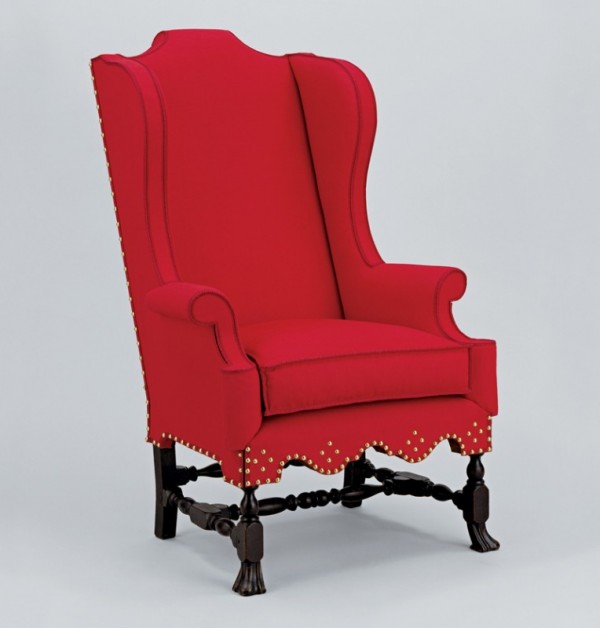
Easy chair, Boston, Massachusetts, 1710–1730. Maple with oak and white pine. H. 49 3/4", W. 31 1/4", D. 20 1/2". (Courtesy, Colonial Williamsburg Foundation, gift of Colonel and Mrs. Miodrag Blagojevich, 1977-336.) This chair retains part of its original wing rolls and foundation linen and has remnants of the original wool show covers. The current wool fabric was dyed to match those remnants and fitted with a nonintrusive upholstery system developed by Colonial Williamsburg conservator Leroy Graves. The upholstery and conservation of this chair will be featured in his forthcoming book, The Upholstery Craft in America and England, 1750–1820: Reading the Evidence.

Small wing chair, Boston, Massachusetts, 1705–1710. Maple and Linsey-woolsey. H. 47", W. 27", D. 33". (Collection of Shelburne Museum. 3.3-62. Photo, Sanders Milens).
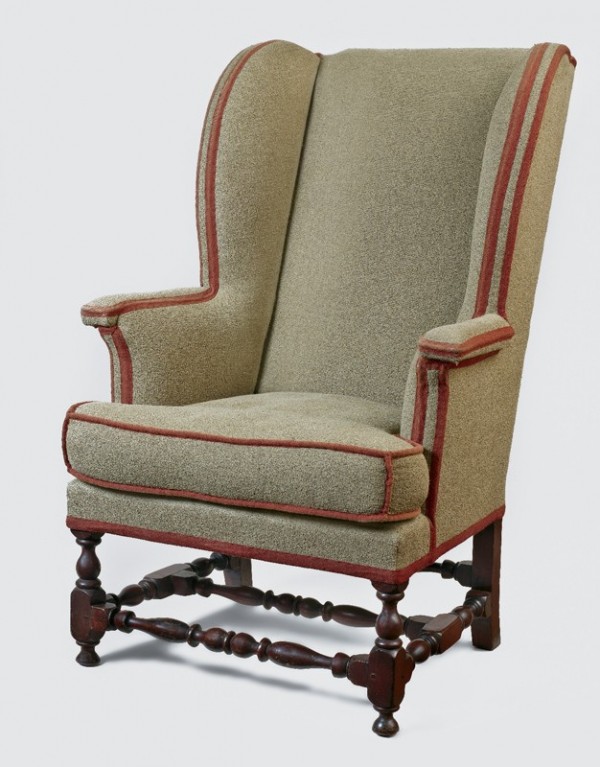
Easy chair, Boston, Massachusetts, 1705–1710. Maple with cherry and white pine. H. 44 1/4", W. 25 3/4", D. 32". (Private collection; photo, Gavin Ashworth.)

Rear view of the easy chair illustrated in fig. 3. (Photo, Gavin Ashworth.)

Overall of the easy chair illustrated in fig. 3, showing the frame stripped before upholstery. (Photo, Robert F. Trent.) This view shows the plywood prostheses added to the wings to compensate for later chamfers on the inside edges of the wings and for losses to the tops of the upper wing rails.
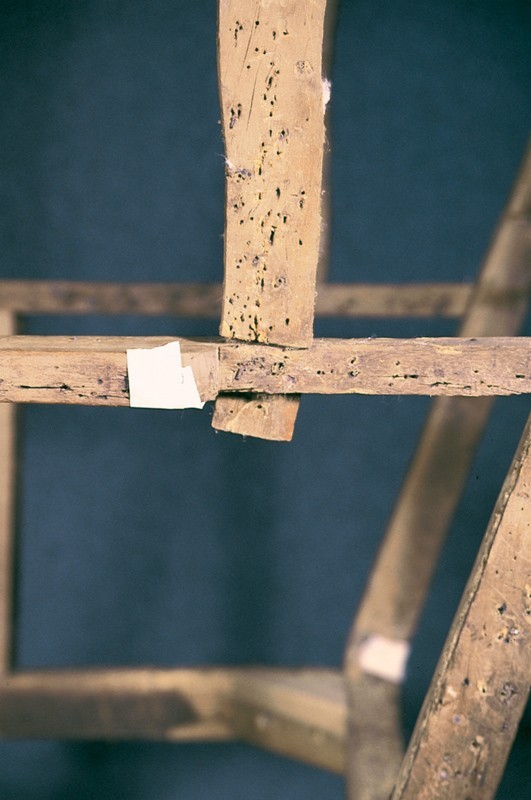
Detail of the easy chair illustrated in fig. 3, showing the joint between the wing stile and the arm (Photo, Robert F. Trent.)

Easy chair, Boston, Massachusetts, 1710–1715. Maple with pine. Dimensions not recorded. (Luke Vincent Lockwood, Colonial Furniture in America, 3rd ed., 2 vols. [New York: Charles Scribner’s Sons, 1926], 2: 65, fig. 507).
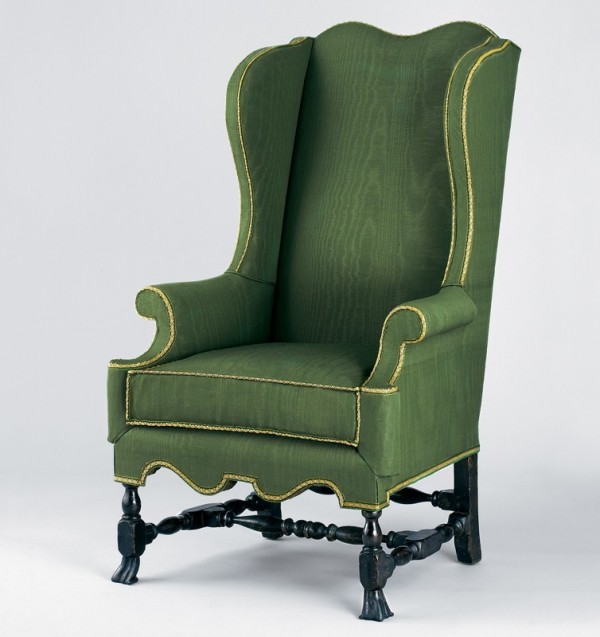
Easy chair, Boston, Massachusetts, 1710–1730. Maple with maple and oak. H. 49 1/8", W. 29", D. 32 7/8". (Chipstone Foundation; photo, Craig McDougal.) This chair has a nonintrusive upholstery system developed by Colonial Williamsburg conservator Leroy Graves.
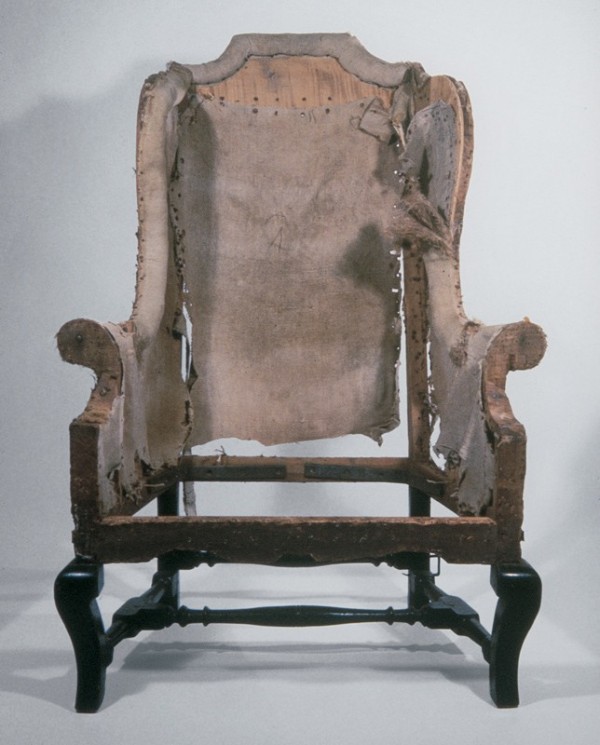
Easy chair, Boston, Massachusetts, 1725–1740. Maple with white pine. H. 47 1/2", W. 35", D. 36". (Currier Museum of Art, Manchester, New Hampshire, gift of Jane B. and Margaret C. Stearns, 1981.54.)
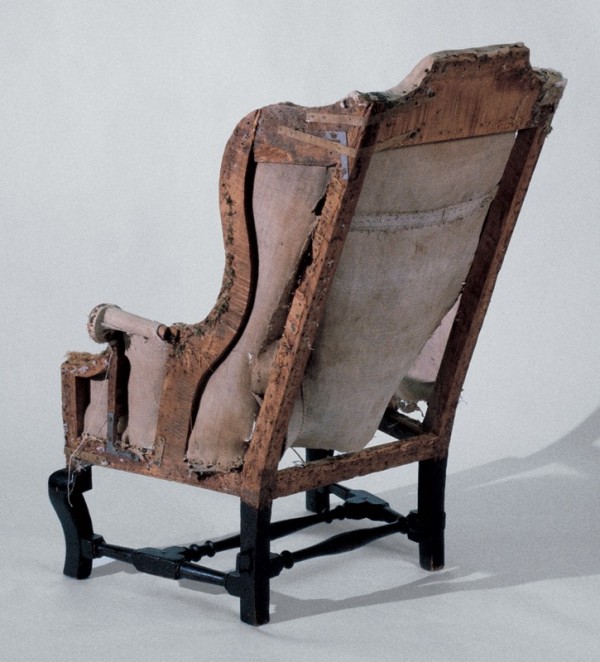
Rear view of the easy chair illustrated in fig. 9.

Side view of the easy chair illustrated in fig. 9.
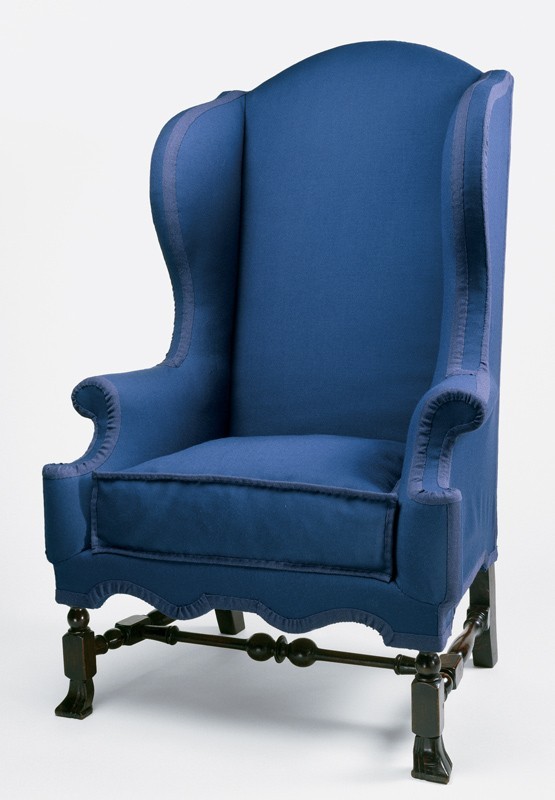
Easy chair, Boston, Massachusetts, 1720–1735. Maple. H. 48", W. 33 3/4", D. 29". (Courtesy, Museum of Fine Arts, Houston, Bayou Bend Collection, gift of Miss Ima Hogg, B58.104.) Conservators Christopher Shelton and Steve Pine executed this nonintrusive upholstery during the mid-1990s.

Easy chair, Boston, Massachusetts, 1710–1735. Maple with maple, oak, birch, beech, and white pine. H. 48 1/4", W. 30 11/16", D. 34 6/16". (Courtesy, Philadelphia Museum of Art, gift of Anne H. and Frederick Vogel III, 1999-62-1.) The deck appears to be an old replacement.
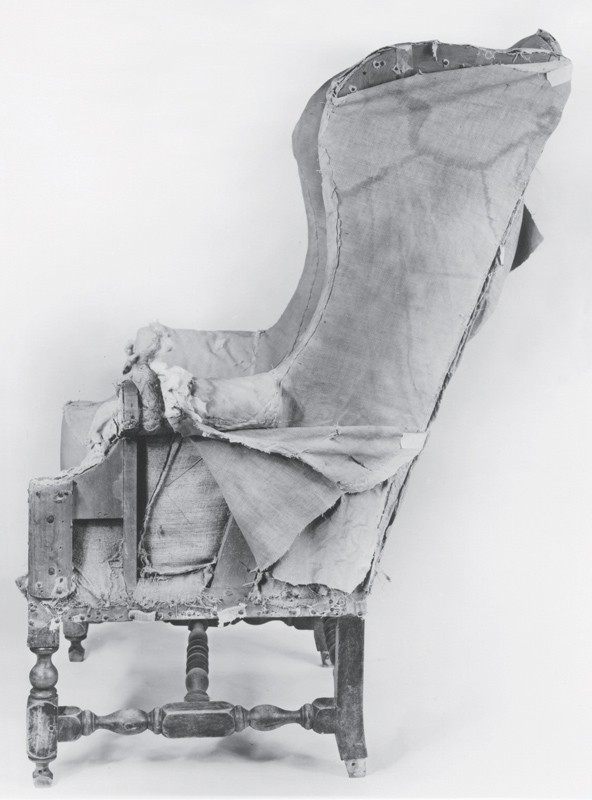
Side view of the easy chair illustrated in fig. 13. The edge roll continues around the upper arm scroll. On most easy chairs, edge rolls diminish as soon as they pass toward the outside of the frame.
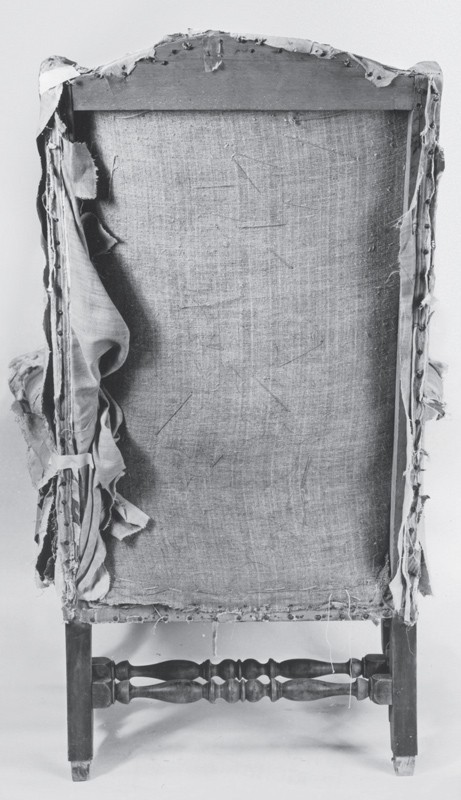
Rear view of the easy chair illustrated in fig. 13.

Overall of the easy chair illustrated in fig. 13, showing the frame after the stuffing was removed.
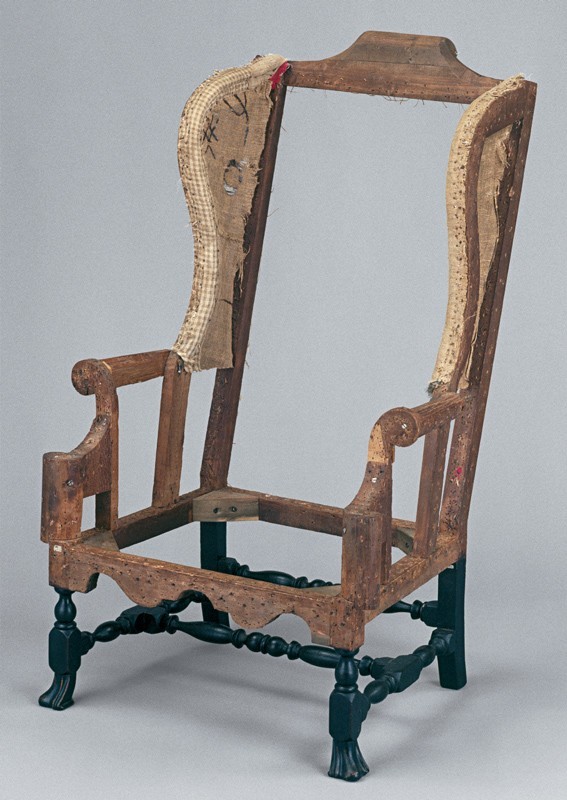
Overall of the easy chair illustrated in fig. 1, showing the frame with original edge rolls and sackcloth on the wings.
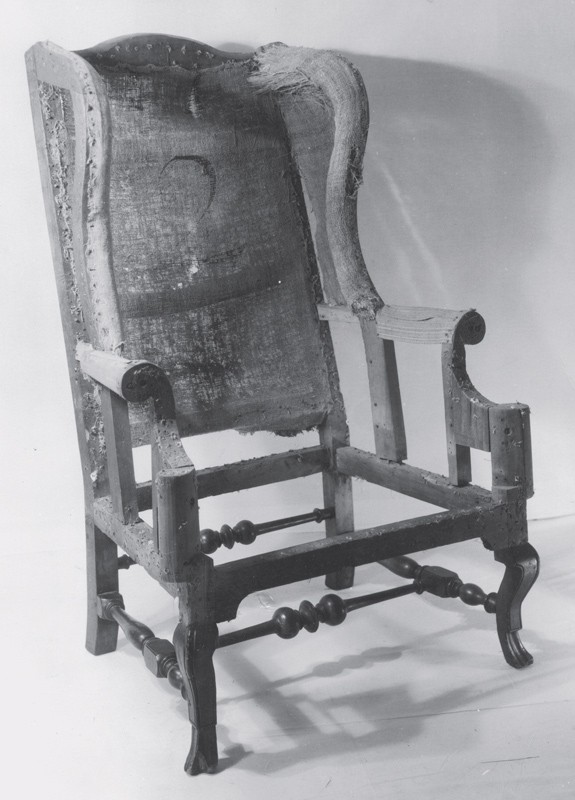
Easy chair, Boston, Massachusetts, 1725–1740. Maple with white pine. Dimensions not recorded. (John Kenneth Byard Collection, Archives of American Art, Decorative Arts Photographic Library, Winterthur Museum.)
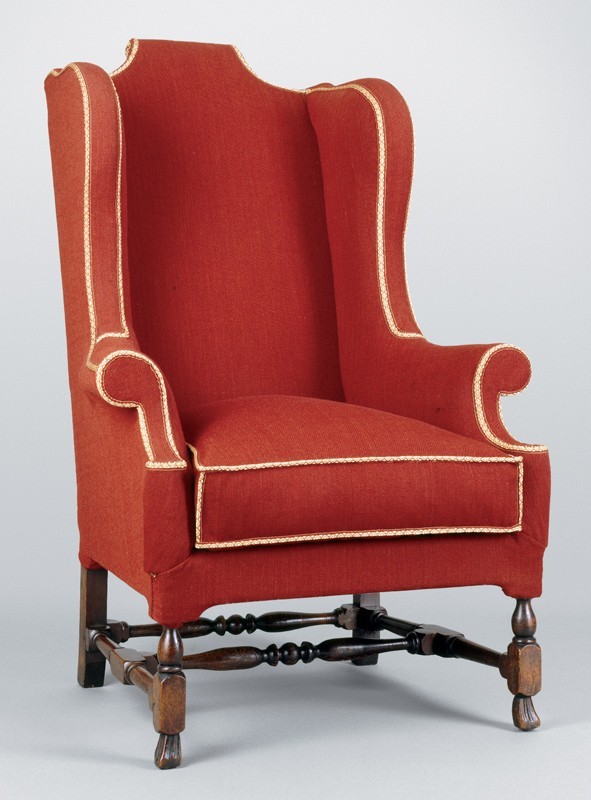
Easy chair, Boston, Massachusetts, 1710–1735. Maple with oak. H. 48 7/8", W. 27 1/4" (seat), D. 22 1/2" (seat). (Courtesy, Metropolitan Museum of Art, gift of Mrs. J. Insley Blair, 50.228.1; photo, Gavin Ashworth.) Conservator Nancy Britton executed this nonintrusive upholstery in 2000.

Detail of the crest of the easy chair illustrated in fig. 19. (Photo, Nancy Britton.)
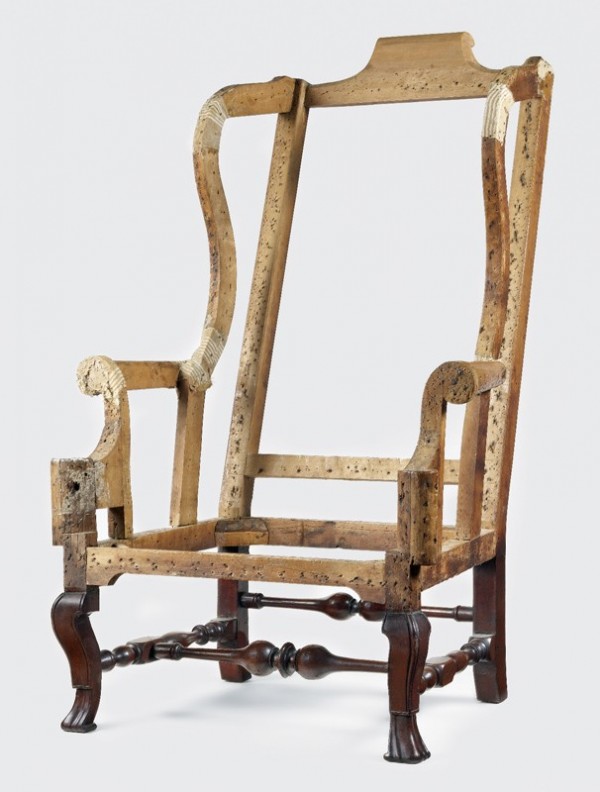
Easy chair, Boston, Massachusetts, 1725–1740. Maple with pine. H. 49", W. 31 3/4", D. 31 1/2". (Private collection; photo, Gavin Ashworth.) The applied toes and scrolled portion of the crest are restored. This chair retains flanges on the back edges of its scroll feet, indicating that carved laminations were originally present. The scroll feet of all Boston baroque easy chairs were made in this manner.

Rear view of the easy chair illustrated in fig. 21. (Photo, Gavin Ashworth.) This chair was made with a great deal of rake at the back.
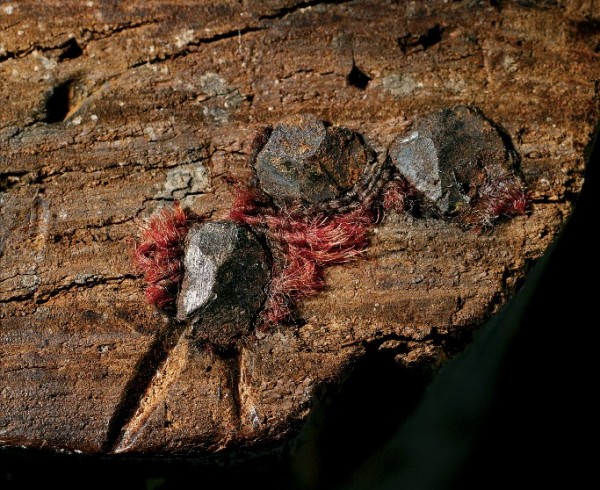
Detail of a red wool fragment trapped under a wrought nail on the underside of a vertical arm cone on the easy chair illustrated in fig. 21. (Photo, Gavin Ashworth.)

Settee, London, England, 1700–1710. Woods and dimensions not recorded. (Charles Latham, In English Homes, 3 vols. [London: Country Life, 1907], 2: 214.) This settee is in Lyme Park, Disley, Cheshire.
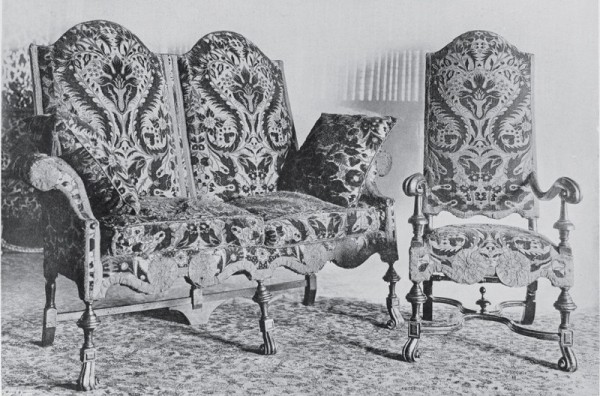
Settee and armchair, London, England, 1700–1710. Woods and dimensions not recorded. (Charles Latham, In English Homes, 3 vols. [London: Country Life, 1907], 2: 90.) London cabinetmaker Philip Guibert made these objects, along with a more elaborate set of seating furniture, for Thomas Osborne, Duke of Leeds. The settee and armchair were originally used at Kiveton in Yorkshire.
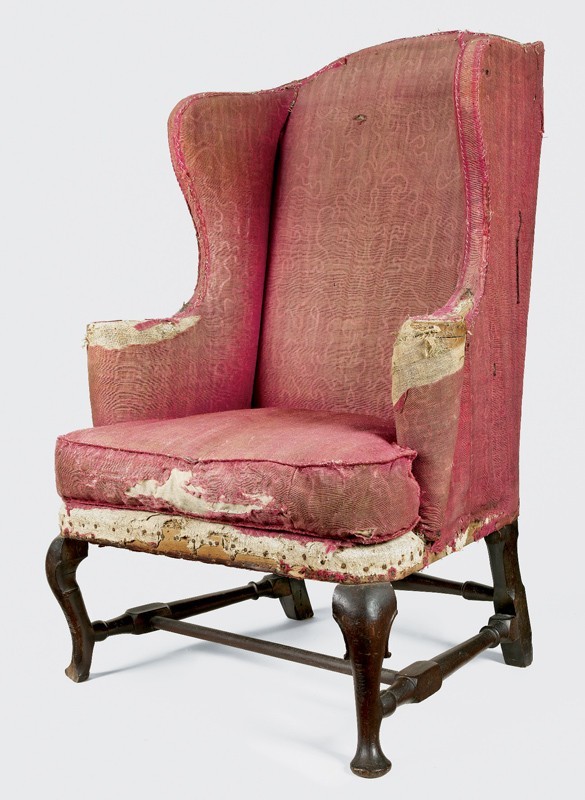
Easy chair, probably Boston, Massachusetts, 1740–1770. Walnut and maple with white pine. H. 47", W. 33 1/4", D. 28". (Courtesy, Colonel Daniel Putnam Association, Brooklyn, Connecticut; photo, Gavin Ashworth.) This chair may have belonged to Godfrey Malbone, who moved from Newport, Rhode Island, to Brooklyn, Connecticut, in the late 1760s.

Rear view of the easy chair illustrated in fig. 26. (Photo, Gavin Ashworth.)
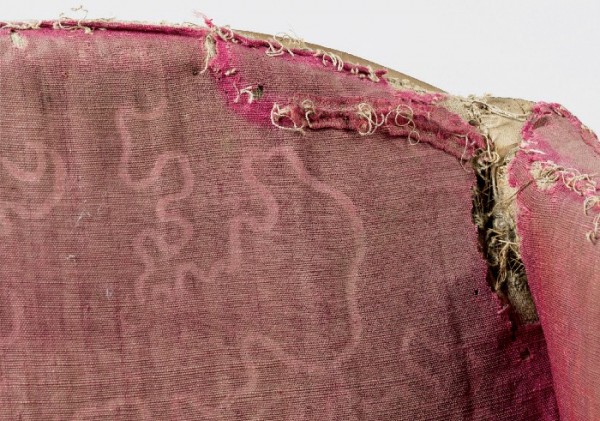
Detail of the easy chair illustrated in fig. 26, showing the false crest created by cord and binding tape. (Photo, Gavin Ashworth.)
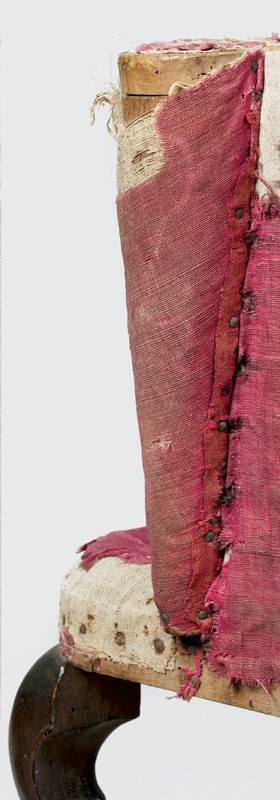
Detail of the diamond-and-snowflake, silk-and-wool binding tape behind an arm cone on the easy chair illustrated in fig. 26. (Photo, Gavin Ashworth.)
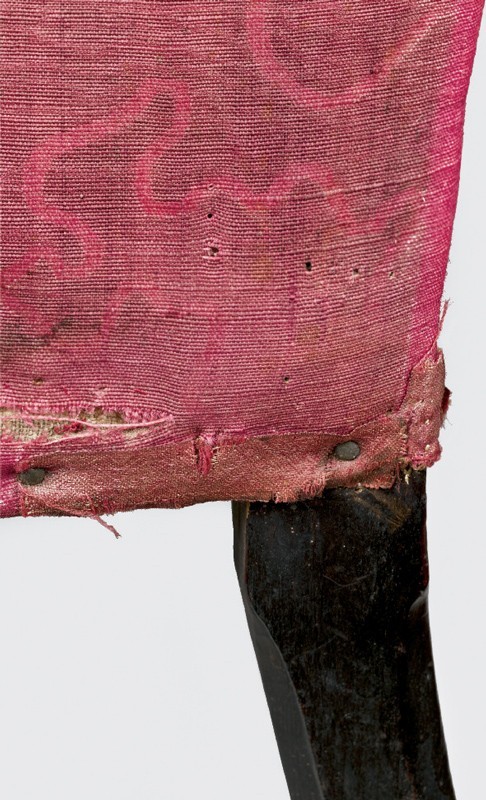
Detail of the seat rail on the right side of the easy chair illustrated in fig. 26, showing the polished steel nails holding the flat tape. (Photo, Gavin Ashworth.)
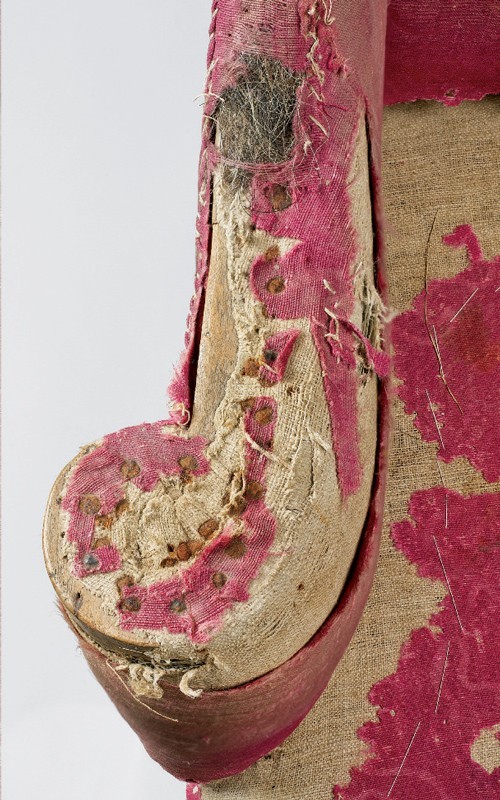
Detail of an arm roll and cone on the easy chair illustrated in fig. 26. (Photo, Gavin Ashworth.)

Detail of the easy chair illustrated in fig. 26, showing the edge roll on the front seat rail and the seat deck with the cushion removed. (Photo, Gavin Ashworth.)
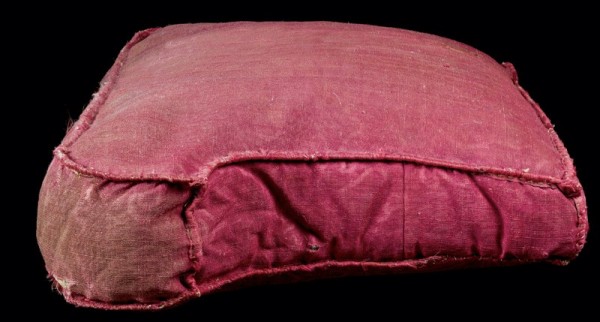
Detail showing the boxing and bound seams of the cushion on the easy chair illustrated in fig. 26. (Photo, Gavin Ashworth.)
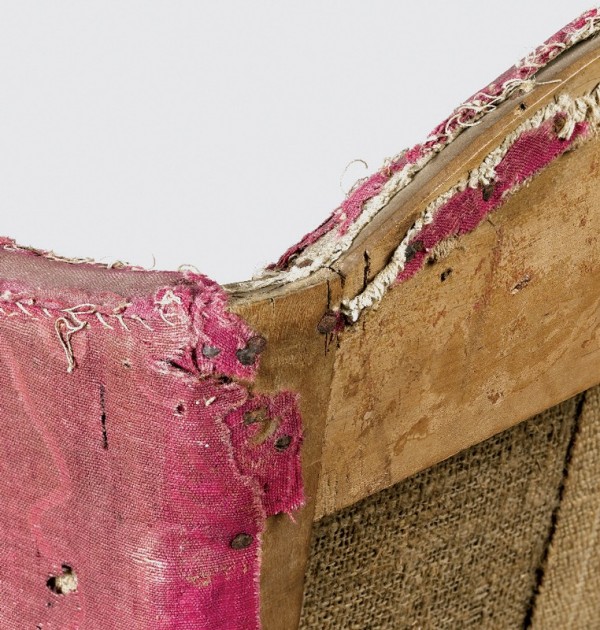
Detail showing the rounded outer edge of a rear post on the easy chair illustrated in fig. 26. (Photo, Gavin Ashworth.)
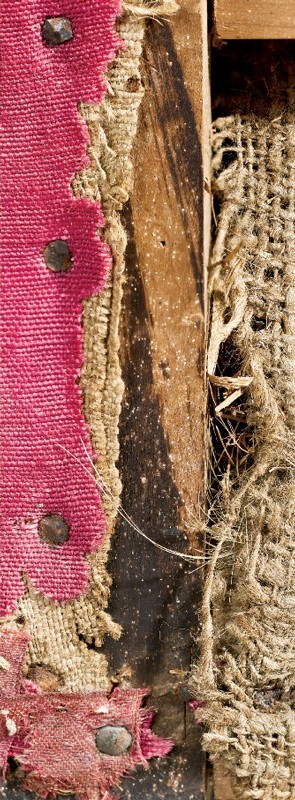
Detail of the walnut-color stain on the left rear foot of the easy chair illustrated in fig. 26. (Photo, Gavin Ashworth.) The foot and post are cut from one piece of maple.
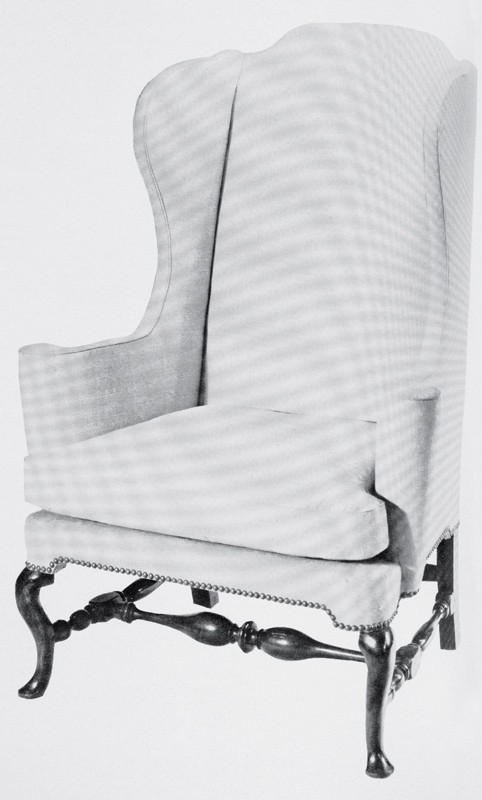
Easy chair, Boston, Massachusetts, 1730–1740. Walnut and maple with white pine. Dimensions not recorded. (Israel Sack, Inc., advertisement, Antiques 98, no. 2 [October 1970]: 472.)

Overall of the easy chair illustrated in fig. 36, showing the stripped frame with no stay rail and three original webbing strips.

Easy chair, Philadelphia, Pennsylvania, ca. 1730. Walnut with oak, pine, and tulip poplar. H. 47 1/2", W. 33 3/4", D. 28". (Courtesy, Christie’s.)

Rear view of the easy chair illustrated in fig. 38.

Side view of the easy chair illustrated in fig. 38.

Detail of the right front leg of the easy chair illustrated in fig. 38.
